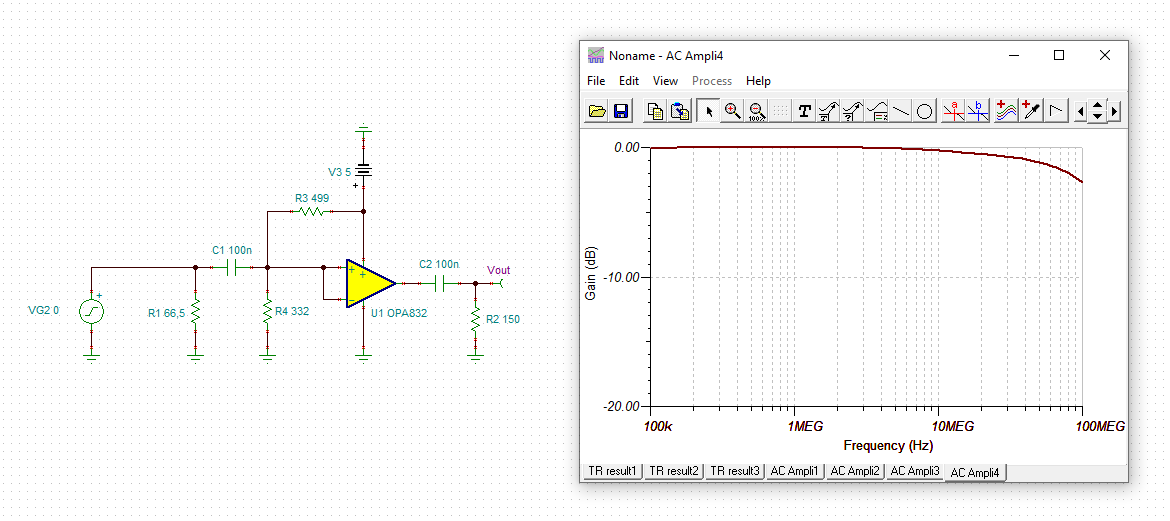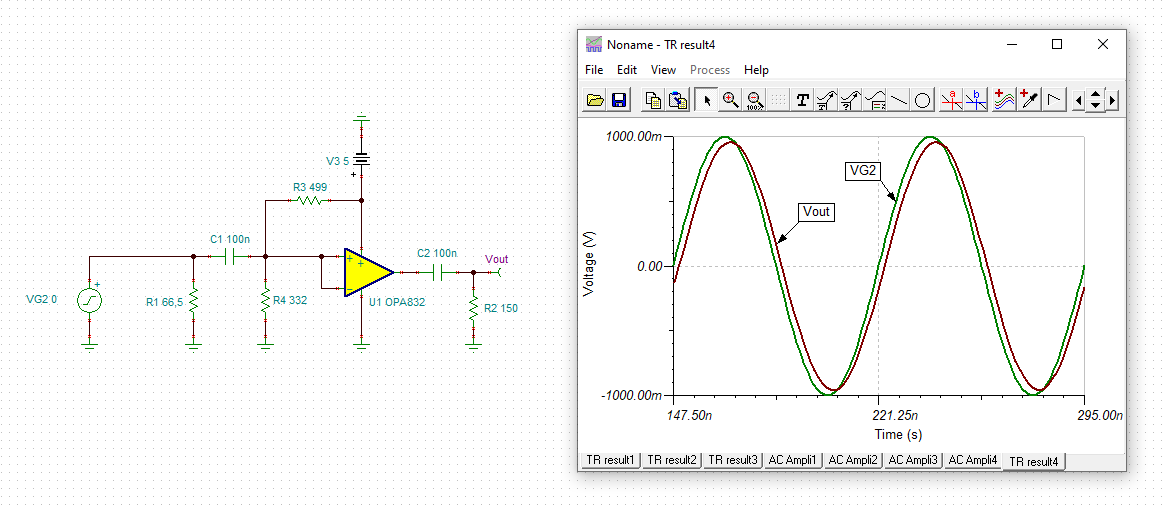Other Parts Discussed in Thread: OPA832
Hi community,
I hope everyone is safe at the current time.
Actually, I was trying to design a buffer and LPF circuit with a single-supply design using OPA837 op-amp and I tried to follow Figure 71 in the datasheet for the buffer circuit, however, I failed to get the desired output out of it. I also tried with dual-supply where it works fine. Can anyone help me to sort it out? File attached for buffer circuit (In reference to Figure 71 of the datasheet). OPA837_SingleSupply.TSC
Thanks in advance.
Best regards,





